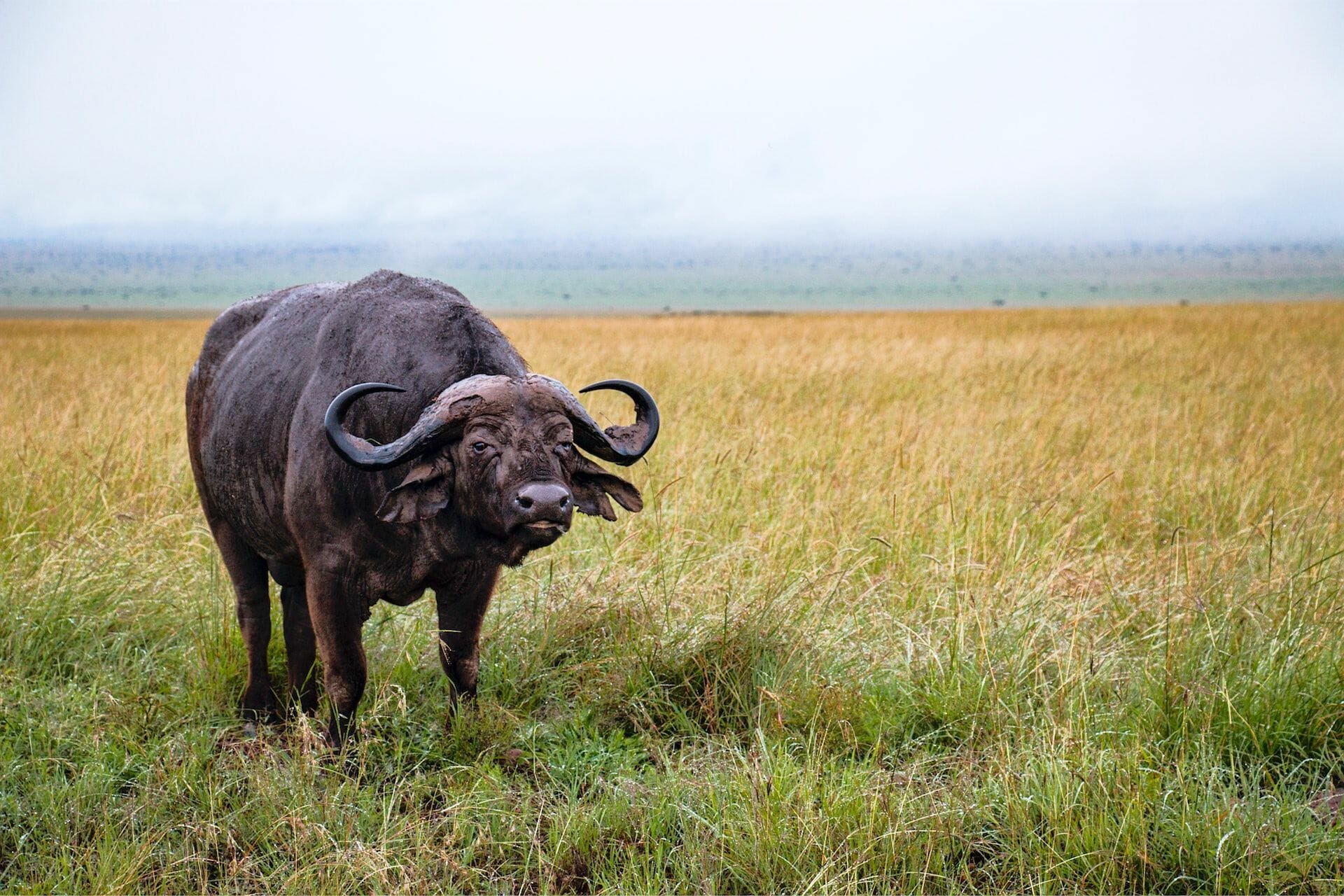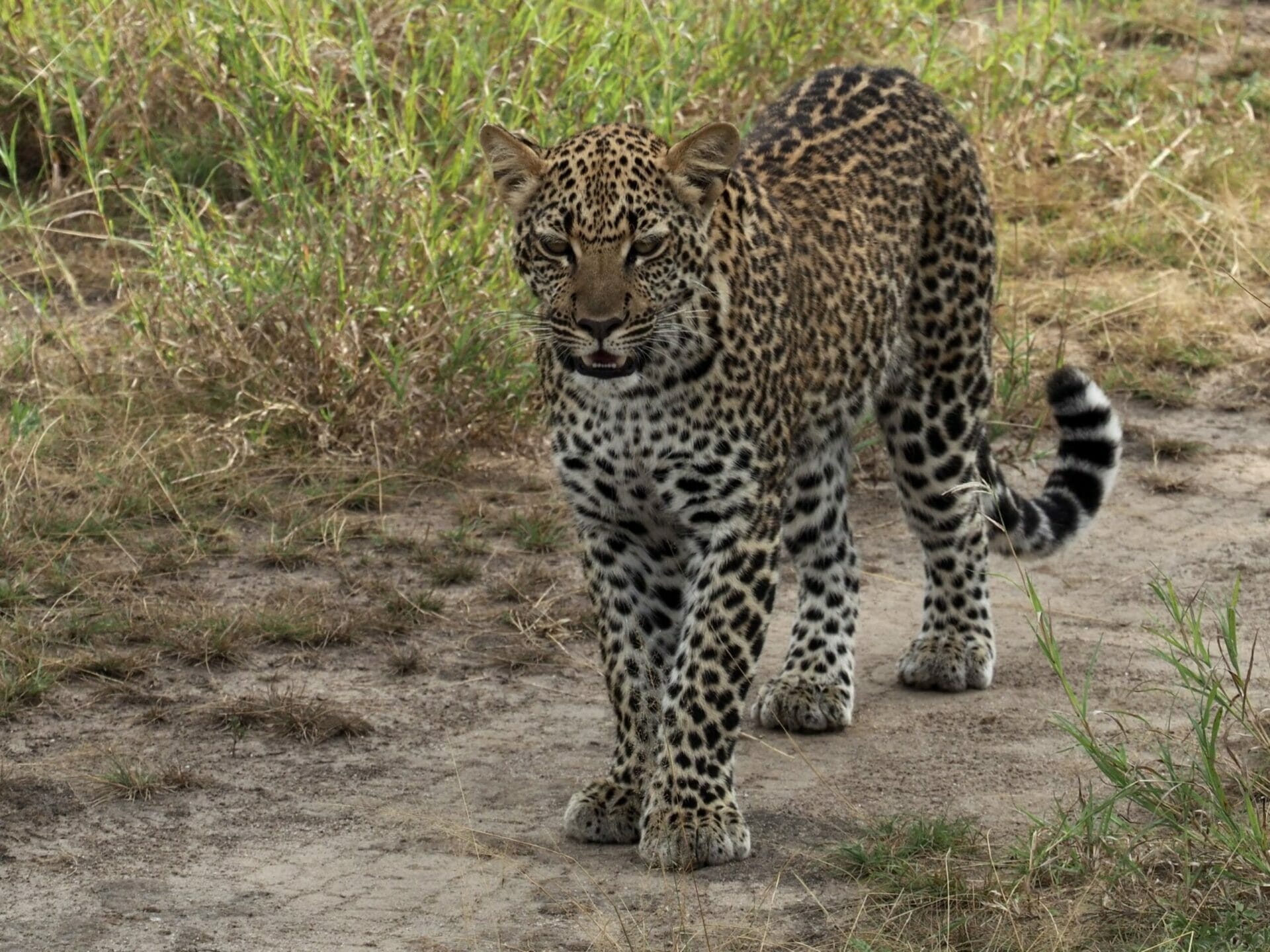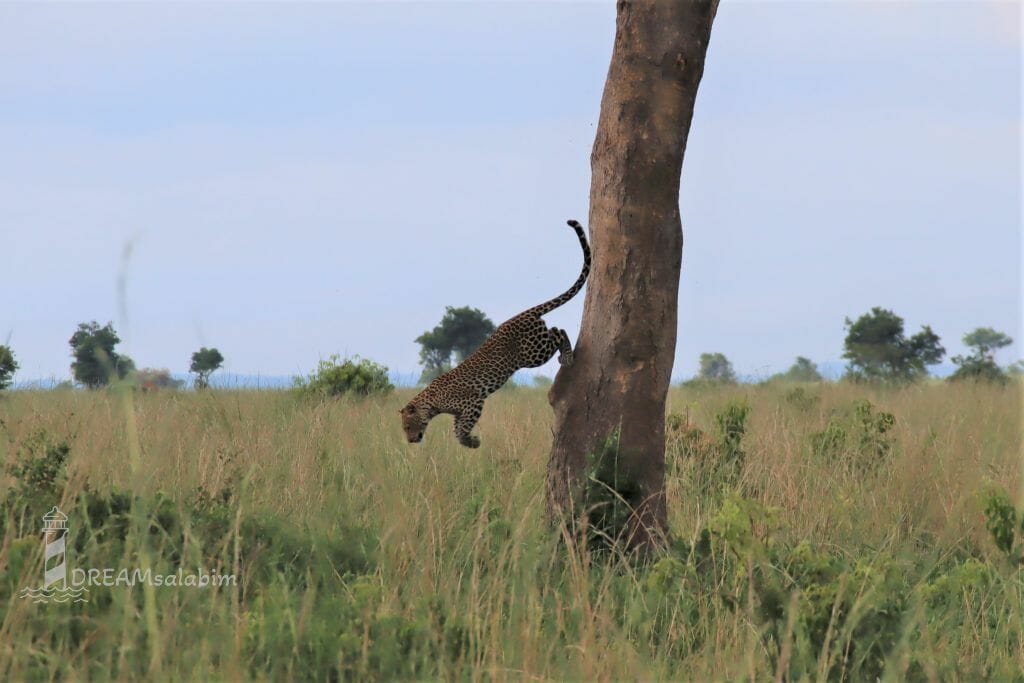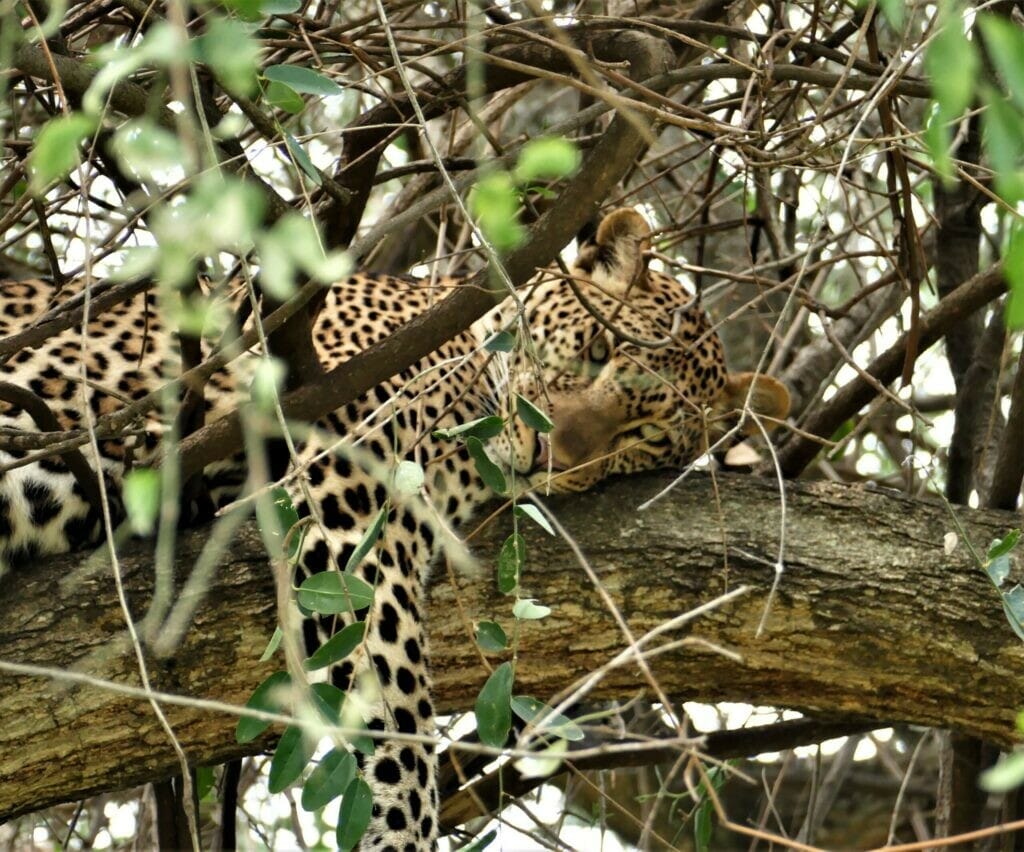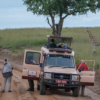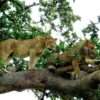Your Guide To The Big 5: Where To See African Buffalo in Uganda
The African buffalo, also known as the Cape buffalo, is one of the most iconic and fascinating wildlife species found in the African savannah – and one of the must-see Big 5 animals. With their immense size, powerful presence, and distinct horns, encountering these majestic creatures up close is a truly unforgettable experience.
In this blog post, we will guide you through the best time to see African buffalo in Uganda, the top safari parks where you can spot them, how to safely observe them in their natural habitat, and essential tips for planning your safari adventure. So, buckle up and get ready for an exciting journey into the heart of Uganda’s wilderness.
Understanding the African buffalo is key to appreciating its significance in the African ecosystem. These large herbivores are known for their strong social bonds, formidable herds, and incredible resilience in the face of predators. They play a vital role in maintaining the balance of the savannah ecosystem, making them a must-see species on any wildlife enthusiast’s list.
To maximize your chances of encountering African buffalos, it’s essential to understand the best time to visit Uganda. We will delve into the different seasons and optimal viewing times when these majestic creatures are most active and readily visible. Whether you prefer the dry season or the rainy season, we have you covered with all the information you need to plan your safari accordingly.
Next, we will explore the top safari parks in Uganda that offer excellent opportunities to see African buffalos. From the vast plains of Murchison Falls National Park to the diverse landscapes of Queen Elizabeth National Park and the scenic beauty of Lake Mburo National Park, each park has its unique charm and promises unforgettable encounters with these magnificent creatures.
Of course, safety is paramount when observing African buffalos in their natural habitat. We will discuss the importance of hiring a knowledgeable guide who can ensure your safety and provide valuable insights into the behavior and habits of these animals. Additionally, we will provide essential safety tips and guidelines to follow, as well as the importance of respecting the wildlife and their environment.
Finally, we will assist you in planning your safari adventure in Uganda. We will cover important aspects such as choosing a reputable tour operator, what to pack for your trip, and crucial health and safety considerations to keep in mind. With our comprehensive guide, you’ll be well-prepared to embark on an incredible journey to see African buffalos in their natural habitat.
So, join us as we delve into the mesmerizing world of African buffalos on a safari in Uganda. Get ready to witness their raw power, observe their fascinating behavior, and create lifelong memories in the heart of Africa’s wilderness. Let’s explore the untamed beauty of Uganda together!
Understanding the African Buffalo
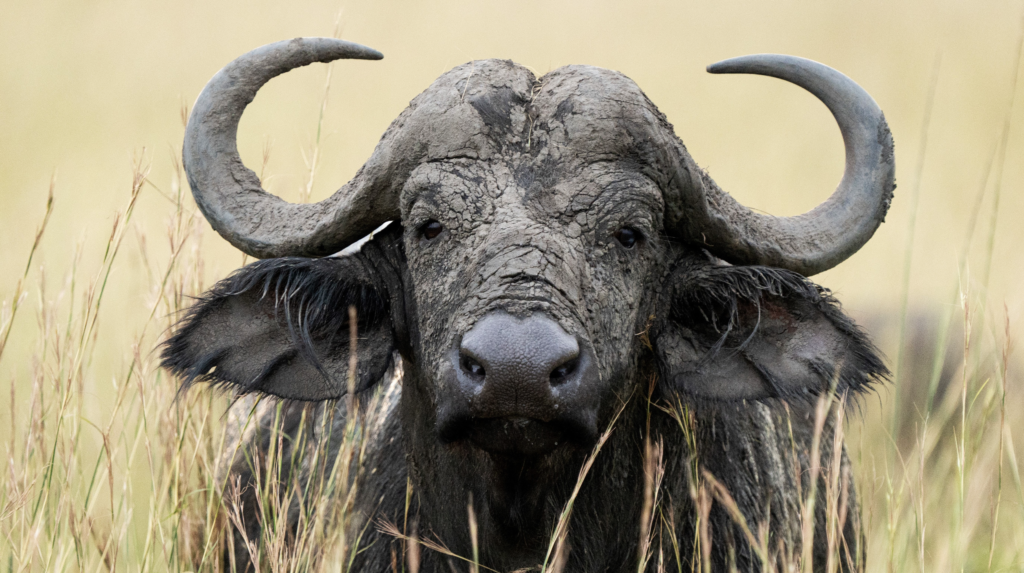
The African buffalo, also known as the Cape buffalo, is a species of large herbivore that is native to the grasslands and savannahs of Africa. It is one of the famous “Big Five” game animals and holds a prominent place in African wildlife conservation.
Physical Characteristics
African buffalos are robust and muscular animals, with a distinctive and powerful appearance. They are known for their large, curved horns, which can span up to 2 meters in width, forming a formidable weapon against predators. Both males and females have horns, although those of the males are typically larger and more impressive.
These herbivores have a massive body structure, with adult males weighing between 600 and 900 kilograms (1,300 to 2,000 pounds), and females weighing slightly less. They have a dark brown or black coat, which is thin in some areas, exposing their tough skin underneath.
Behavior and Social Structure
African buffalos are highly social animals and live in herds that can range from a few individuals to several hundred. The herds are usually led by a dominant bull, who maintains order and protects the group from predators. Within the herd, there is a hierarchical structure, with younger and weaker individuals following the lead of the older and more experienced ones.
These animals have a strong sense of community and will often come to the defense of their fellow herd members, especially when confronted by predators. They are known for their fierce defense tactics, and when threatened, they can become aggressive and charge at their enemies.
Importance in the Ecosystem
African buffalos play a crucial role in the African ecosystem. As grazers, they primarily feed on grasses, maintaining the balance of vegetation in their habitat. By consuming large amounts of grass, they prevent it from overgrowing and allow for the growth of new plants.
Additionally, their dung provides essential nutrients for the soil, benefiting other plant species and supporting a variety of smaller organisms. Their presence also influences the behavior and distribution of other wildlife species, making them an integral part of the savannah ecosystem.
Conservation Status
While African buffalos are not currently considered endangered, they face various threats, including habitat loss, poaching, and disease. Conservation efforts are crucial to protect these magnificent creatures and ensure their continued existence in the wild.
Countries like Uganda have implemented strict conservation measures and established national parks to safeguard the African buffalo population. Through responsible tourism and conservation initiatives, these efforts aim to maintain the delicate balance of the African ecosystem and protect the future of this iconic species.
Understanding the physical characteristics, behavior, and ecological significance of the African buffalo sets the stage for an incredible safari experience in Uganda. With this knowledge, you’ll be able to appreciate the beauty and importance of these magnificent creatures as you embark on your journey to see them in their natural habitat.
Best Time to See African Buffalo in Uganda
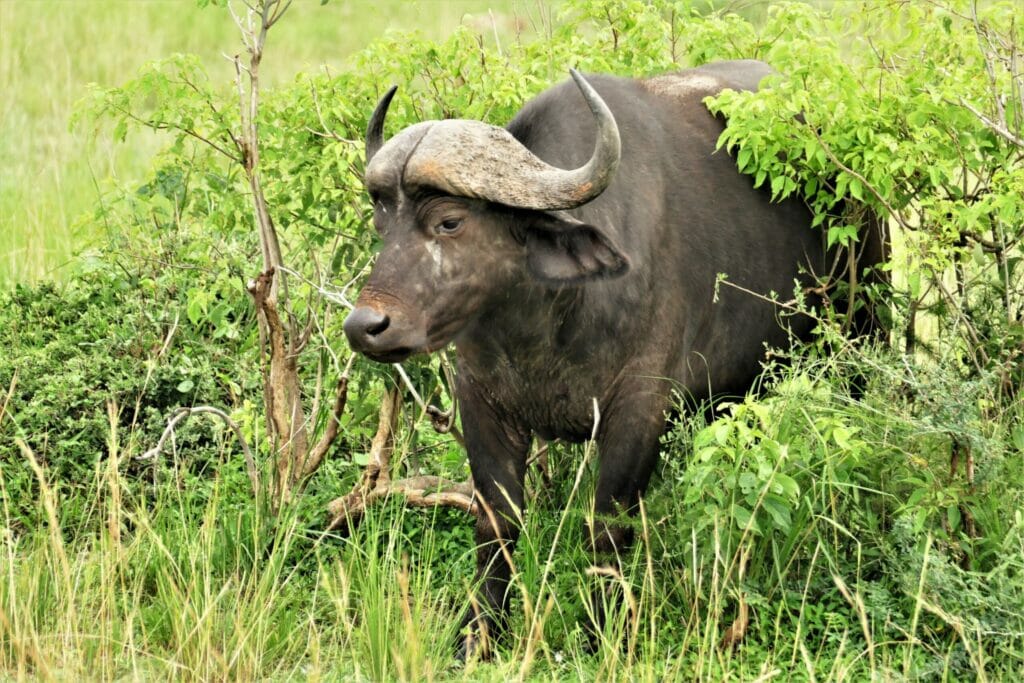
Uganda offers a unique opportunity to witness the majestic African buffalo in its natural habitat. To ensure the best chances of spotting these incredible creatures, it’s important to consider the best time to visit the country. Understanding the seasons and optimal viewing times will help you plan your safari adventure accordingly.
Understanding the Seasons
Uganda experiences two primary seasons: the dry season and the rainy season. Each season offers unique advantages and considerations for wildlife viewing, including the African buffalo.
- Dry Season (December to February and June to September): The dry season is generally considered the best time to visit Uganda for wildlife viewing, including the African buffalo. During this period, the vegetation is less dense, making it easier to spot wildlife. Additionally, as water sources become limited, animals tend to gather around remaining waterholes, increasing the chances of encounters with buffalos.
Rainy Season (March to May and October to November): The rainy season in Uganda brings lush greenery and vibrant landscapes. While the rain can make some areas inaccessible, it also leads to increased vegetation, which can make spotting animals more challenging. However, the rainy season can be an excellent time for birdwatching, as migratory birds flock to the country.
Optimal Viewing Times
Apart from considering the seasons, there are optimal times of the day for observing African buffalos in Uganda. These times coincide with their feeding patterns and activity levels.
- Early Morning: The early morning hours, just after sunrise, are a prime time to spot African buffalos. They are often more active during this time, feeding on grasses and congregating near water sources.
Late Afternoon: Another excellent time to see African buffalos is during the late afternoon hours, just before sunset. As the temperature cools down, buffalos become more active again, moving in search of grazing areas.
By planning your Uganda safari activities around these optimal viewing times, you increase your chances of encountering African buffalos in their natural habitat.
Remember that wildlife sightings can never be guaranteed, as animals are free to roam and behave according to their instincts. However, by visiting during the recommended seasons and observing optimal viewing times, you greatly enhance your safari experience and the likelihood of seeing these magnificent creatures.
Now that you have a good understanding of the best time to see African buffalos in Uganda, it’s time to explore the top safari parks where you can have unforgettable encounters with these incredible animals. So, let’s dive into the next section and discover the wonders of Murchison Falls National Park, Queen Elizabeth National Park, and Lake Mburo National Park.
Top Safari Parks in Uganda to See African Buffalo

Uganda is blessed with several remarkable national parks that provide excellent opportunities to see African buffalos in their natural habitat. These parks offer diverse landscapes, abundant wildlife, and unforgettable safari experiences. Here are three of the top safari parks in Uganda where you can witness the beauty and power of African buffalos up close:
1. Murchison Falls National Park
Located in the northwestern part of Uganda, Murchison Falls National Park is the largest and oldest national park in the country. This park is home to a diverse range of wildlife, including a healthy population of African buffalos.
The park is renowned for its stunning scenery, with the mighty Nile River flowing through it and culminating in the breathtaking Murchison Falls. The combination of savannah plains, woodland, and riverine vegetation provides an ideal habitat for African buffalos.
Visitors to Murchison Falls National Park can embark on game drives, boat safaris, and nature walks to explore the park’s vast landscapes and encounter African buffalos in their natural environment. The Nile River cruise to the base of the falls is a highlight, allowing for incredible wildlife sightings, including herds of buffalos coming to drink at the water’s edge.
2. Queen Elizabeth National Park
Situated in southwestern Uganda, Queen Elizabeth National Park is one of the most diverse and scenic parks in the country. It is named after Queen Elizabeth II and is famous for its abundance of wildlife, stunning crater lakes, and the iconic Rwenzori Mountains as a backdrop.
Within the park, the Kasenyi Plains and Ishasha sector are known for their populations of African buffalos. The open grasslands of Kasenyi provide excellent opportunities to spot herds of buffalos grazing, while the Ishasha sector is famous for its tree-climbing lions, which often rest on fig trees, alongside buffalos.
Game drives, boat safaris along the Kazinga Channel, and guided walks are popular activities in Queen Elizabeth National Park. These activities allow visitors to witness the incredible diversity of wildlife, including African buffalos, as they roam freely in their natural habitat.
3. Lake Mburo National Park
Located in the western part of Uganda, Lake Mburo National Park is a smaller but equally captivating park that offers a unique wildlife experience. The park is characterized by rolling hills, open grasslands, and a series of beautiful lakes.
Lake Mburo National Park is home to a healthy population of African buffalos, which can often be seen in large herds grazing on the open savannah. The park’s diverse ecosystem also supports a variety of other wildlife, including zebras, impalas, and giraffes.
Activities in Lake Mburo National Park include game drives, boat safaris on Lake Mburo, and guided nature walks. These activities provide opportunities to get close to African buffalos and observe their behavior while enjoying the park’s picturesque landscapes.
A visit to any of these top safari parks in Uganda will undoubtedly offer incredible encounters with African buffalos and a chance to witness the wonders of Uganda’s wildlife. So, pack your bags, embark on an adventure, and get ready to immerse yourself in the beauty of these extraordinary creatures in their natural habitat.
How to Safely Observe African Buffalos
Observing African buffalos in their natural habitat is an exhilarating experience, but it is essential to prioritize safety for both yourself and the animals. These powerful creatures can be unpredictable, and it is crucial to follow proper guidelines to ensure a safe and respectful encounter. Here are some important tips on how to safely observe African buffalos during your safari adventure in Uganda:
Importance of Hiring a Guide
- Engage a Knowledgeable Guide: It is highly recommended to hire a professional and experienced safari guide who is familiar with the behavior and habits of African buffalos. A knowledgeable guide will provide valuable insights, enhance your wildlife experience, and prioritize your safety.
Follow Their Instructions: Listen carefully to the instructions provided by your guide and follow them at all times. They will have the expertise to anticipate the behavior of African buffalos and guide you on how to maintain a safe distance.
Safety Tips
Maintain a Safe Distance: African buffalos are wild animals that should be observed from a safe distance. Keep a distance of at least 30 meters (100 feet) from these animals to avoid any potential dangers. Remember that they are fast and agile, and their behavior can be unpredictable.
Use Binoculars and Cameras: To observe African buffalos up close without approaching them too closely, use binoculars or a camera with a zoom lens. This allows you to have a detailed view of the animals while maintaining a safe distance.
Avoid Sudden Movements and Loud Noises: Sudden movements or loud noises can startle African buffalos and potentially trigger an aggressive response. Maintain a calm and quiet demeanor to avoid disturbing the animals and ensure a peaceful observation.
Respecting the Wildlife
- Do Not Feed or Approach Buffalos: It is crucial to remember that African buffalos are wild animals and should not be fed or approached. Feeding them can disrupt their natural diet, behavior, and social structure. It is also important to avoid approaching them on foot, as this can be perceived as a threat.
Observe from a Vehicle or Designated Viewing Areas: When observing African buffalos, it is recommended to do so from a safari vehicle or designated viewing areas. This ensures your safety and minimizes disturbance to the animals. Do not step out of the vehicle unless instructed by your guide.
- Practice Responsible Photography: When taking photographs of African buffalos, ensure that your actions do not cause stress or harm to the animals. Avoid using flash photography, as it can startle them, and always respect their personal space and behavior.
By following these safety tips and guidelines, you can enjoy a memorable and safe experience observing African buffalos in their natural habitat. Remember, wildlife conservation and safety should always be a top priority, allowing these magnificent creatures to thrive undisturbed in their natural environment.
Come With Kikooko Africa Safaris To See African Buffalo in Uganda
By considering these planning factors, you can ensure a smooth and enjoyable safari adventure in Uganda. Remember to be flexible, embrace the unpredictability of wildlife encounters, and savor every moment as you witness the awe-inspiring African buffalos and the incredible beauty of Uganda’s national parks.
Experience East Africa by booking a safari with Kikooko Africa Safaris, a locally owned and operated safari company based in Uganda.

